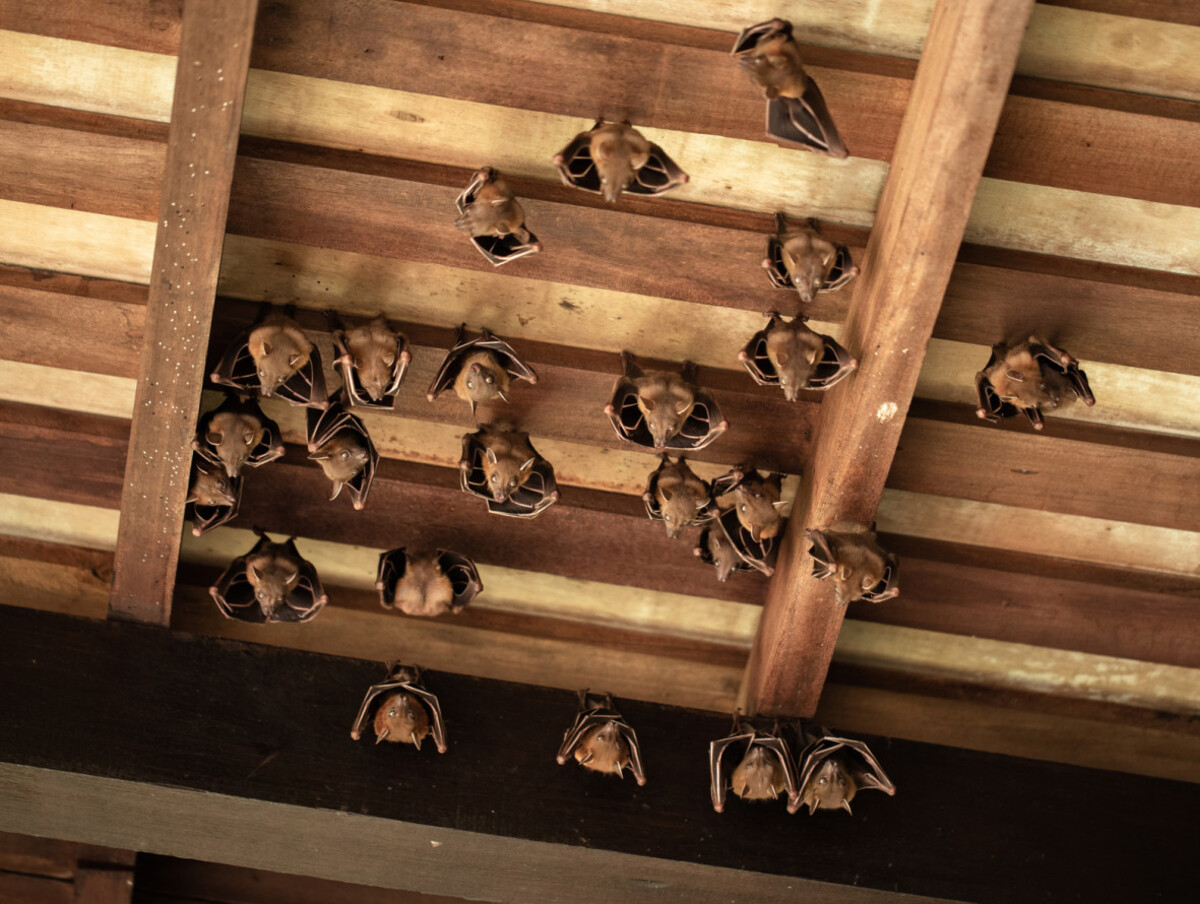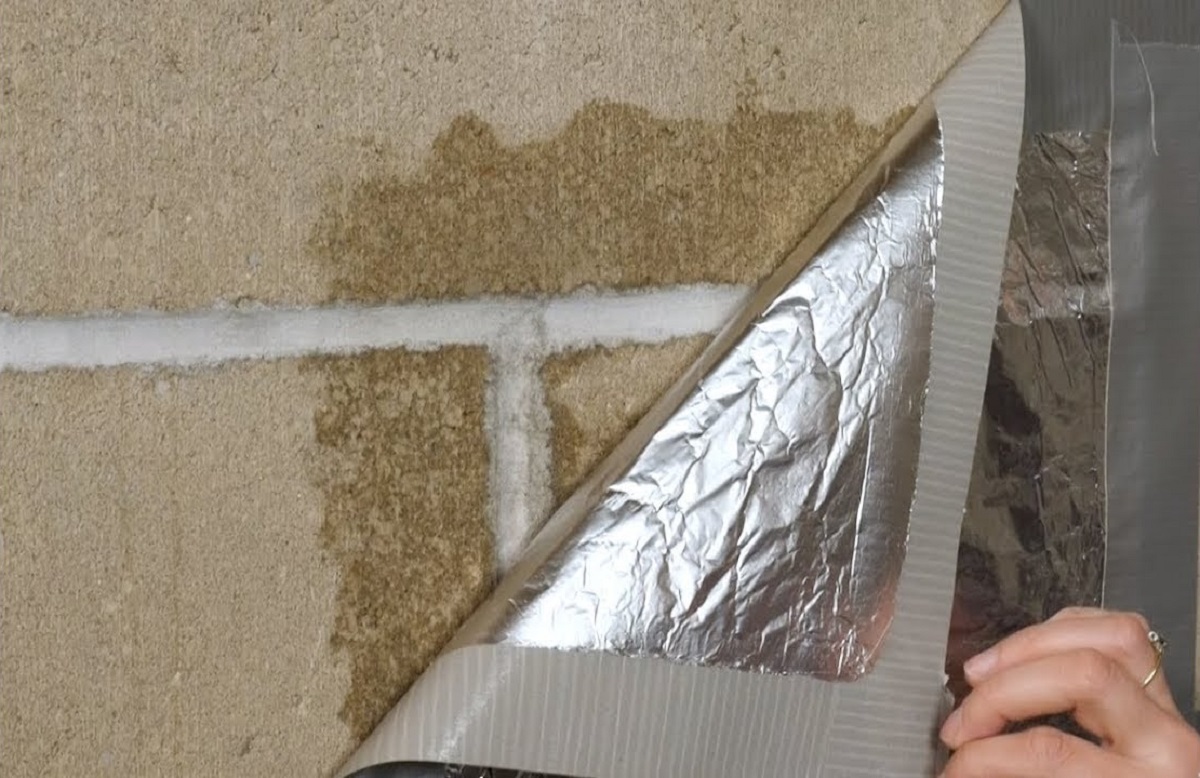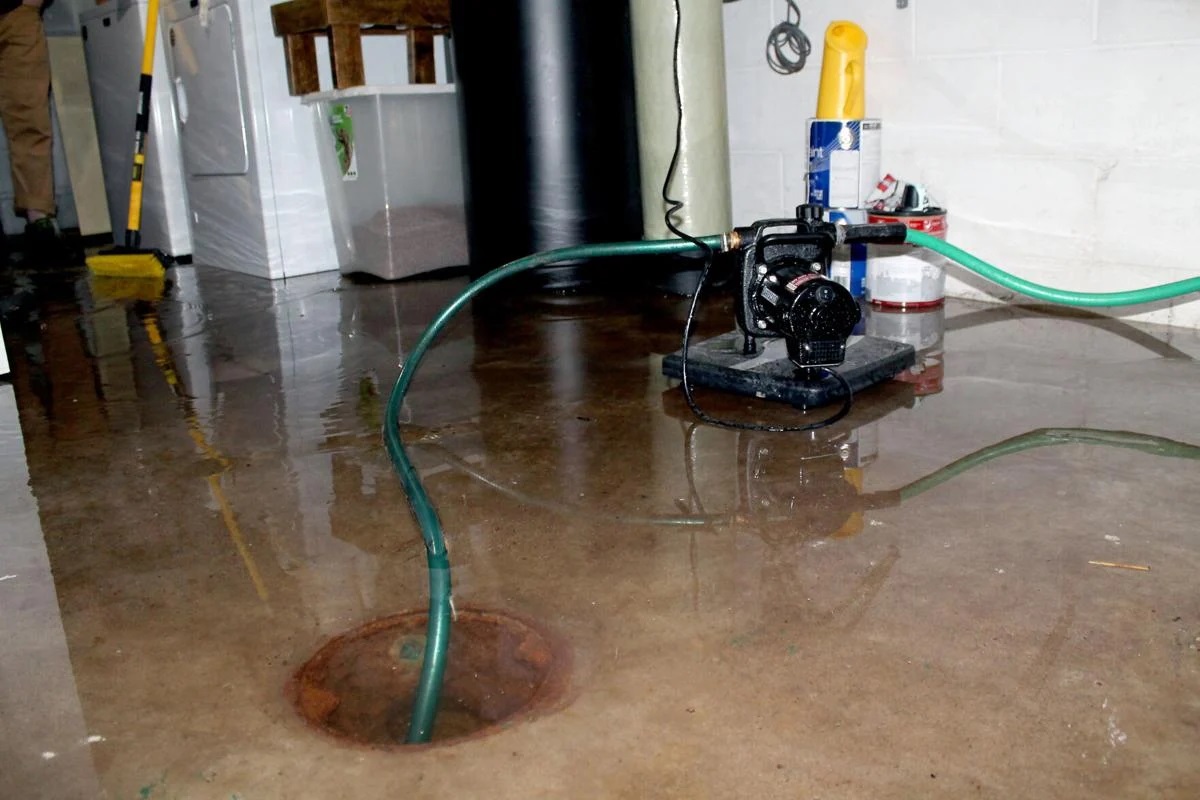

Articles
How To Get A Bat Out Of The Basement
Modified: January 18, 2024
Discover effective techniques and articles on how to safely and efficiently remove a bat from your basement. Get rid of unwanted intruders with expert tips!
(Many of the links in this article redirect to a specific reviewed product. Your purchase of these products through affiliate links helps to generate commission for Storables.com, at no extra cost. Learn more)
Introduction
Having a bat in your basement can be a nerve-wracking and unsettling experience. Bats are notorious for their ability to squeeze through small openings and find their way into our homes. While bats are generally harmless creatures that play a vital role in our ecosystem, they can become a nuisance when they invade our living spaces.
In this article, we will explore effective strategies to safely remove a bat from your basement. We will provide insights on assessing the situation, identifying entry points, clearing the area, creating an escape route, encouraging the bat to exit, removing the bat, and preventing future invasions.
It is important to note that bats are protected species in many regions, and it is illegal to harm or kill them. Therefore, it is crucial to approach bat removal with compassion and respect for these creatures.
Before attempting any bat removal methods, always remember to prioritize your safety and the well-being of the bat. If you feel uncomfortable or unsure about handling the situation, it is advisable to seek professional help from a wildlife expert or a licensed pest control operator.
Now, let’s delve into the steps necessary to safely and humanely get a bat out of your basement.
Key Takeaways:
- Safely remove bats by assessing the situation, identifying entry points, and creating an escape route. Encourage bats to exit using natural cues and gentle guidance, prioritizing their well-being and your safety.
- Prevent future bat invasions by sealing entry points, installing screens, and maintaining a clean environment. Coexist with bats by implementing proactive measures and seeking professional assistance when needed.
Read more: How To Get Bats Out Of A Chimney
Assessing the Situation
The first step in safely removing a bat from your basement is to assess the situation. Take a moment to observe the bat’s behavior and understand its motives. Is the bat flying frantically around the room, or is it calmly perched in a corner? This information can help you determine the best course of action.
It is important to note that bats are nocturnal creatures, meaning they are most active during the night. If you encounter a bat in your basement during the day, it may be a sign of distress or illness. In such cases, it is advisable to contact a local wildlife rescue organization to assist with the situation.
While assessing the situation, be mindful of your own safety. Keep a safe distance from the bat, as they may feel threatened and could react defensively. Avoid making sudden movements or loud noises that could startle the bat and potentially cause it to fly around more erratically.
It is also important to consider if there are any vulnerable individuals, such as children or pets, in the vicinity of the bat. If so, ensure they are safely removed from the area to prevent any unwanted encounters.
During the assessment, take note of any potential entry points for the bat to access your basement. Bats can squeeze through openings as small as half an inch, so it’s essential to thoroughly inspect the walls, windows, doors, and any other possible entryways. Identifying these points will help in preventing future invasions by sealing off any vulnerable areas.
Remember, assessing the situation is a crucial step in determining the best approach to safely remove the bat from your basement. By understanding the bat’s behavior and your surroundings, you can proceed with confidence and take appropriate action.
Identifying Entry Points
Once you have assessed the situation and determined that a bat has entered your basement, the next step is to identify the entry points through which the bat gained access. Bats have the ability to squeeze through small openings, so it’s important to thoroughly inspect your basement for potential entry points.
Start by carefully examining the walls, windows, doors, and any other openings in your basement. Look for any cracks, gaps, or holes that could serve as a point of entry for the bat. Pay close attention to areas where pipes, vents, and electrical wiring pass through the walls, as bats can easily slip through these small gaps.
It’s important to note that bats are skilled climbers and can access your basement through openings higher up on the exterior of your home. Check the roofline, eaves, and chimneys for any gaps or openings that could serve as potential entry points.
Once you have identified the entry points, it’s crucial to seal them off to prevent future bat invasions. Use caulk or weatherstripping to close gaps around windows and doors. For larger openings, consider using wire mesh or expanding foam to create a more secure barrier.
Keep in mind that bats are protected species in many regions, so it’s essential to ensure that your sealing methods do not harm or trap any bats inside your basement. It’s recommended to complete the sealing process during the daytime when bats are likely to be out foraging.
If you are unsure about identifying and sealing potential entry points, it may be wise to consult a professional wildlife expert or pest control operator. They will have the necessary skills and experience to locate and secure entry points effectively.
By identifying and sealing off entry points, you can significantly reduce the likelihood of future bat invasions in your basement. Remember, prevention is key when it comes to dealing with bats, as it’s best to keep them outside where they can continue to contribute to the ecosystem.
Clearing the Area
Before attempting any methods to encourage the bat to leave your basement, it’s important to clear the area to ensure the safety of both you and the bat. Removing any obstacles or potential hazards will create a safer environment for both parties involved.
Start by removing any valuable or fragile items from the area where the bat is present. This will prevent them from being accidentally knocked over or damaged during the bat removal process. Additionally, clearing the space will provide the bat with more freedom to fly and find its way out.
Close off any unnecessary rooms or doors leading to other parts of your home. This will help to confine the bat to a smaller area, making it easier to encourage it towards an exit point. Be sure to also close any windows or other openings that lead to outdoor areas to prevent the bat from escaping further into your home.
Ensure that all lights in the basement are turned off, except for one. Bats are naturally attracted to darkness, and the single light source will act as a beacon, leading the bat towards it and potentially towards an exit point.
If you have any pets, it’s crucial to keep them out of the area where the bat is present to avoid any confrontations or potential harm. Pets may become frightened or curious about the bat, leading to a stressful situation for both them and the bat. Keep them in a separate room or area until the bat has been safely removed.
By ensuring the area is clear and free of potential hazards, you create a safer space for the bat to fly and increase the likelihood of it finding its way out of your basement. Remember to exercise caution and move slowly and calmly to avoid startling the bat during the process.
Creating an Escape Route
After clearing the area and ensuring the safety of both you and the bat, the next step is to create an escape route to guide the bat out of your basement. By strategically placing exit points, you can encourage the bat to fly towards freedom.
Firstly, identify the ideal exit point(s) in your basement. This should be a window or door that leads directly to the outdoors. Choose exit points that are easily accessible for the bat and preferably in a direction that allows it to fly away from your living space.
Once you have determined the exit point(s), ensure that the path leading to it is clear of any obstacles. This means removing any furniture, clutter, or other items that may impede the bat’s flight path. Keep in mind that bats use echolocation to navigate, so it’s important to provide a clear and unobstructed route.
To increase the bat’s chances of finding the exit point, you can utilize visual cues. Place a bright light or flashlight near the exit, directing the beam towards the desired path. Bats are naturally drawn to light, and this can help guide them in the right direction.
In addition to visual cues, you can also use sound to create an appealing environment for the bat to follow. Play a recording of bat calls or use a high-frequency sound emitter (specifically designed for bat removal) near the exit point. This will mimic the presence of other bats and may encourage the trapped bat to join them outside.
Remember, bats are sensitive to sudden movements and loud noises, so it’s important to be mindful of your actions during this process. Move calmly and avoid making any abrupt gestures or loud sounds that could startle the bat.
By creating a clear and enticing escape route, you increase the likelihood of the bat finding its way out of your basement and back into its natural habitat. Providing visual and auditory cues will guide the bat towards the exit point, making the removal process smoother and more successful.
Open all doors and windows to the outside to create an escape route for the bat. Turn off the lights and wait for the bat to fly towards the open exit. Do not try to catch or handle the bat yourself.
Read more: How To Get Basement Smell Out Of Basement
Encouraging the Bat to Exit
Encouraging the bat to exit your basement requires a combination of patience, calmness, and gentle guidance. There are several methods and techniques you can employ to motivate the bat to find its way out.
One effective method is to use air currents to guide the bat towards the exit. Open any windows or doors that lead to the outdoors, creating a draft that directs air towards the exit point. Bats are sensitive to air movement and will naturally be inclined to fly towards the source.
If there are multiple windows or openings in your basement, temporarily close all but the desired exit point. This will help to focus the bat’s attention and increase the chances of it choosing the correct path.
As previously mentioned, bats are drawn to darkness. Turn off all lights in the basement, except for the ones near the exit point. The contrast of light and darkness will attract the bat towards the exit and discourage it from exploring other areas of the basement.
Using a long object such as a broom or mop, gently and slowly guide the bat in the direction of the exit point. Avoid making contact with the bat and use the object as an extension of your arm to gently push it towards the desired path. Remember to remain calm and patient throughout this process.
Another technique is to create a “visual funnel” using a sheet or net. Hold the sheet or net up near the exit point, extending it outward to form a barrier in other areas of the basement. This will guide the bat towards the exit by restricting its flight path and gently nudging it in the right direction.
If the bat is perched on a surface or hanging from the ceiling, avoid using force or attempting to physically remove it. Instead, create disturbances or vibrations near the bat to encourage it to take flight. Softly tapping on nearby surfaces or using a gentle air current from a fan can prompt the bat to move and ultimately find its way out.
Remember, patience is key when encouraging the bat to exit. It may take some time for the bat to feel comfortable and respond to your guidance. Stay calm, avoid sudden movements or loud noises, and allow the bat to navigate towards the exit in its own time.
Removing the Bat
Once the bat has successfully found its way to the exit point and is prepared to leave your basement, the next step is to safely remove it from your home. It’s essential to approach this process with caution and respect for the bat’s well-being.
Using a long-handled net or a thick, sturdy towel, carefully and gently catch the bat as it flies towards the exit. Aim to capture the bat mid-flight, guiding it into the net or wrapping it in the towel. Be sure to wear gloves to protect yourself from potential bites or scratches.
3It’s important to note that if the bat is clinging to a wall or surface, avoid forcefully removing it. Allow the bat to fly towards the exit naturally, as attempting to physically remove it could cause distress and potential harm.
If you are uncomfortable with handling the bat yourself, consider contacting a local wildlife rescue organization or a licensed pest control operator. They have the necessary training and expertise to safely capture and handle bats, ensuring their well-being and your safety.
Once the bat has been captured, carefully and slowly take it outside, away from your home. Choose an area that is open and free from obstructions, such as tree branches or power lines. Release the bat by gently opening the net or unwrapping it from the towel, allowing the bat to fly off and continue its journey.
Remember, bats are protected species in many regions, and disturbing them or causing harm is illegal. It’s vital to handle bats with care and respect, prioritizing their well-being throughout the removal process.
If you believe that there may be more bats in your home or basement, it is advisable to consult with a professional to conduct a thorough inspection and provide appropriate guidance for bat removal.
By safely and compassionately removing the bat from your basement, you ensure its freedom while maintaining a harmonious coexistence between humans and wildlife.
Preventing Future Invasions
After successfully removing the bat from your basement, it’s important to take preventive measures to reduce the likelihood of future bat invasions. By addressing potential entry points and making your home less attractive to bats, you can minimize the risk of another bat finding its way inside.
The first step in preventing future invasions is to thoroughly inspect your home for any gaps, cracks, or openings that bats could use as entry points. Pay close attention to areas where pipes, vents, and electrical wiring enter your home. Seal off these openings using caulk, wire mesh, or expanding foam to create a secure barrier.
Ensure that all windows and doors have tight-fitting screens without any tears or holes. This will help prevent bats from entering through these openings while allowing fresh air to circulate in your home.
If you have a chimney, install a chimney cap to prevent bats from roosting or entering through the chimney. Regularly inspect the cap for any damage and repair or replace it as needed.
Trim tree branches that are close to or touching your home. Bats can use overhanging branches as a pathway to access your roof and eventually your basement. By keeping tree branches away from your home, you create a deterrent for bats to approach.
Consider installing bat houses in your yard as an alternative roosting spot. Bat houses provide bats with a safe and suitable habitat, reducing the likelihood of them seeking refuge in your home. Consult with local wildlife experts or organizations for guidance on the proper placement and design of bat houses.
Keep your basement clean, organized, and free of clutter. Bats are attracted to dark and cluttered spaces, so maintaining a well-kept basement will make it less appealing for them to take shelter.
Regularly inspect your home for any signs of bats, such as guano (bat droppings) or strange noises in the walls or attic. Early detection can help address any potential bat infestations before they become a major problem.
If you live in an area with a high population of bats, consider consulting with professionals to install exclusion devices or bat-proofing systems. These systems allow bats to leave your home but prevent them from re-entering, addressing any lingering bat issues.
By implementing these preventive measures, you can significantly reduce the chances of future bat invasions. Remember, bats play a vital role in our ecosystem, so it’s important to find ways to coexist with them while keeping them outside of our living spaces.
Conclusion
Dealing with a bat in your basement can be a daunting experience, but with the right approach and techniques, you can safely and humanely remove it from your home. Remember to prioritize the safety of both yourself and the bat throughout the entire process.
Assessing the situation, identifying entry points, and clearing the area are crucial initial steps that help create a safe environment for the bat to exit from your basement. Creating an escape route and encouraging the bat to find its way out through natural cues increases the chances of a successful removal.
Once the bat has made its way to the exit point, carefully and gently remove it using a net or towel, or consider seeking professional assistance if you’re uncomfortable with handling bats yourself. Release the bat outside, away from your home and any potential hazards.
To prevent future invasions, seal off any potential entry points, install screens on windows and doors, trim tree branches, and maintain a clean and organized basement. Regular inspections and proactive measures will help keep bats and other unwanted intruders at bay.
Remember, bats are protected species in many regions, so it’s important to handle them with care and respect. If you’re unsure or uncomfortable with bat removal, contact local wildlife experts or pest control professionals for assistance.
By following these steps and approaching bat removal with compassion and responsibility, you can ensure the safety and well-being of both yourself and the bats that inhabit our world.
Frequently Asked Questions about How To Get A Bat Out Of The Basement
Was this page helpful?
At Storables.com, we guarantee accurate and reliable information. Our content, validated by Expert Board Contributors, is crafted following stringent Editorial Policies. We're committed to providing you with well-researched, expert-backed insights for all your informational needs.















0 thoughts on “How To Get A Bat Out Of The Basement”